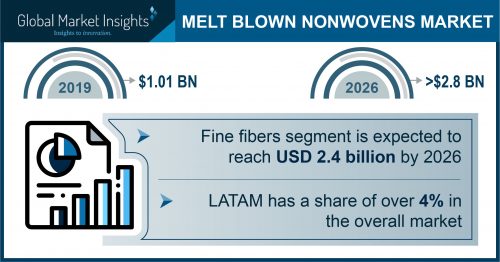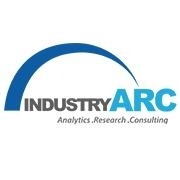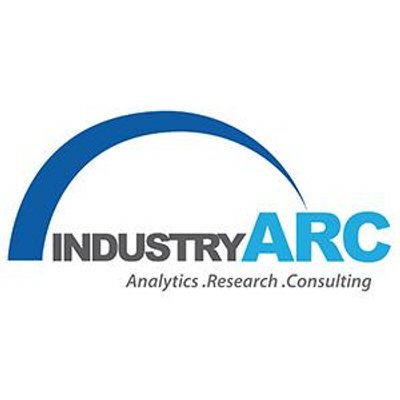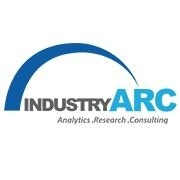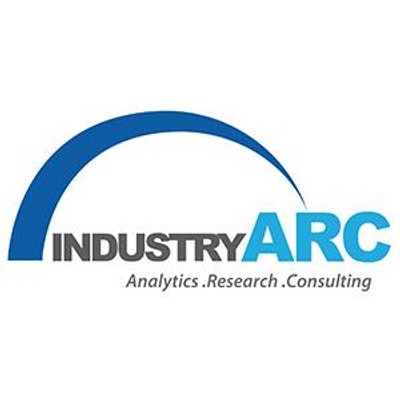The Europe gum fiber market size will record an appreciable CAGR of 10% through 2027
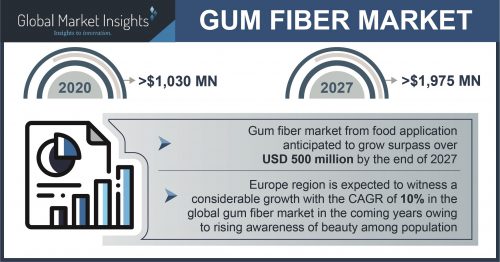
Delaware, United States – July 23, 2021 /MarketersMedia/ —
Major gum fiber market trends are driven by an increase in footprint expansion strategies such as acquisitions, mergers, collaborations, as well as product development and launch initiatives by prominent industry participants. In addition, several organizations are playing a crucial role in expanding the penetration of products with gum fiber content.
To cite an instance, in January 2021, purveyors of acacia gum submitted a new petition to the U.S. Food and Drug Administration. The petition accompanied additional scientific data for supporting their contention that gum fiber should be categorized as a dietary fiber on food labels. The petition further underscores the positive impact of acacia gum on insulin and glucose levels following a meal.
To access a sample copy or view this report in detail along with the table of contents, please click the link below: https://www.gminsights.com/request-sample/detail/4752
Considering the above mentioned factors and as per the most recent research by Global Market Insights, Inc., the gum fiber market share is estimated to exceed a revenue of USD 1,975 million through 2027.
Major players operating in the gum fiber industry comprise Ingredion Incorporated, Supreme Gums Private Limited, Dabur India Ltd., AEP Colloids, Ashland, Nexira, Inc., Lucid Colloids Ltd., VIKAS WSP LIMITED, and others.
Some of the prominent trends driving gum fiber industry outlook are as follows:
Increasing beauty awareness in Europe
The Europe gum fiber market size will record an appreciable CAGR of 10% through 2027, propelled by the surging beauty awareness amongst the population in the continent. Due to their thickening properties, gum fibers find numerous applications in the cosmetics industry for the manufacturing of lotions, toothpaste, creams, and shaving creams.
The market growth is further escalated by the increasing awareness pertaining to dental hygiene that is set to foster the demand for toothpaste. This factor is further supplemented by the increasing grooming trends among people and the surging inclination towards utilization of skin care products for the improvement of appearance.
Rising product usage in food applications
The food application segment in the gum fiber market is poised to surpass a valuation of USD 500 million through 2027, given that gum fiber is majorly used in the food manufacturing industry as emulsifiers, thickeners, and stabilizers. Gum fiber supplements are used in dairy, frozen foods, beverages, and confectionery.
It would be pivotal to note that guar gums find increasing applications in the thriving food industry. Predominantly, gum fibers are utilized in the manufacturing of confectionery products. While Gum Arabica is commonly deployed for this type of manufacturing, the product provides persuading attributes comprising flavor encapsulation, improved texture, reduction of gelatin content, long lasting flavor release, and improved yield and processability in extruded confectionery application.
Surging consumer awareness regarding diet
The industry is witnessing an increasing awareness amongst consumers regarding their diet. These consumers are moving to the idea of deep-seated transparency and have access to smart labels, and other required alternatives for products with clean labeling.
Moreover, an increase in the demand for transparency and surging lifestyle diseases has escalated the demand for label on the products. Therefore, companies are specifically focusing on label claims and gum fiber is a very striking product for such claims.
Furthermore, favorable EU rules that permit the usage of gum fibers in various applications play an important role in expanding the business landscape. But, import regulations regarding product certifications and quality requirements play a significant role in supporting industry expansion.
In a nutshell, the increasing use of gum fibers for explosives manufacturing as water binding agent for aqueous slurry explosives and in the trillion dollar food industry, will bolster gum fiber market size over the projected span.
Contact Info:
Name: Arun Hegde
Email: Send Email
Organization: Global Market Insights Inc.
Address: 4 North Main Street, Selbyville, Delaware 19975 USA
Phone: 1-302-846-7766
Website: https://www.gminsights.com/pressrelease/gum-fiber-market
Source URL: https://marketersmedia.com/gum-fiber-market-trends-2021-growth-analysis-and-forecasts-2027/89038165
Source: MarketersMedia
Release ID: 89038165
